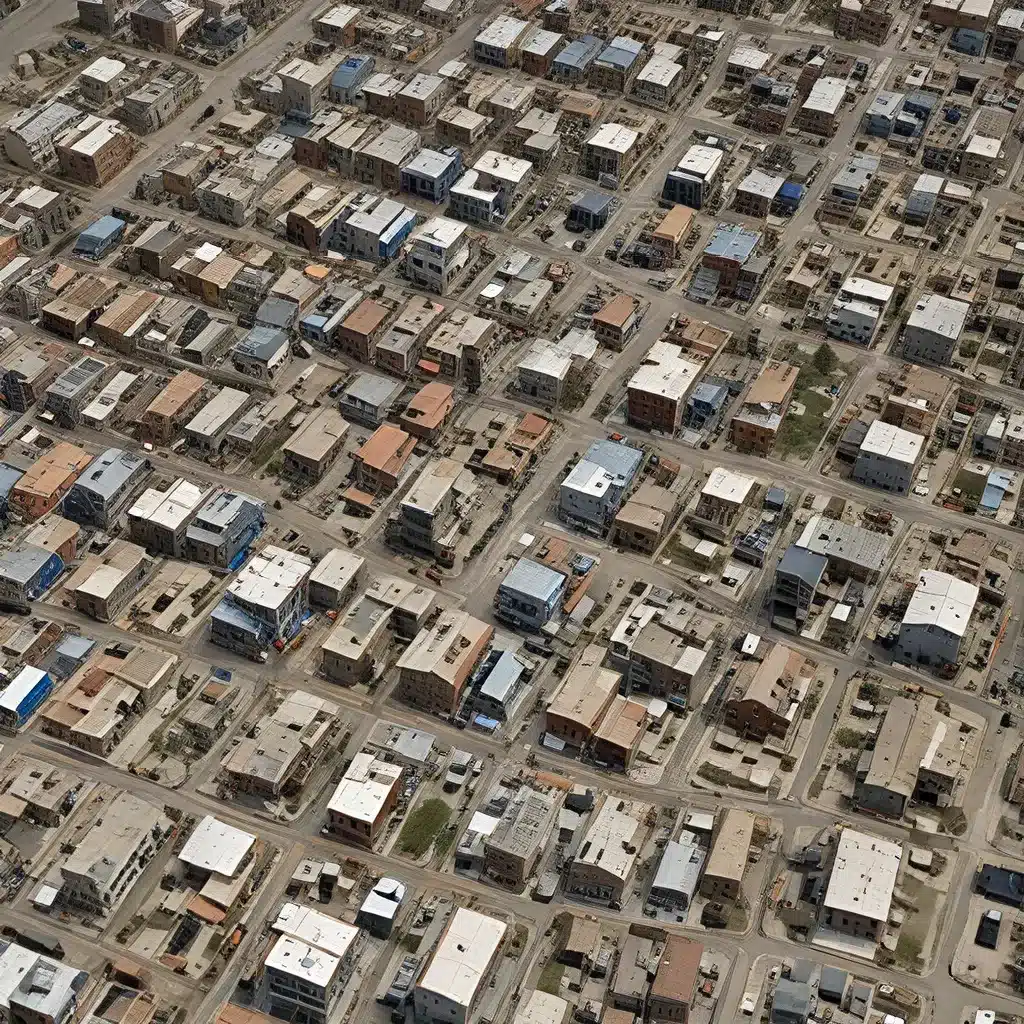
Sensor Networks: The Backbone of Resilient Disaster Response
In an era of increasingly frequent and severe natural disasters, the role of sensor networks and Internet of Things (IoT) technologies has become paramount in bolstering the resilience of our critical infrastructure and disaster response capabilities. As the world grapples with the impacts of climate change, the need for robust, adaptable, and intelligent sensor-based systems has never been more pressing.
NREL’s advanced distribution management system (ADMS) research stands at the forefront of this transformative field, leveraging cutting-edge technologies to empower utility providers and emergency responders with the tools they need to navigate the challenges of the modern era. By seamlessly integrating distributed energy resources (DERs), building management systems, and utility data management, ADMS solutions are redefining the way we approach disaster preparedness and response.
Decentralized Algorithms for Resilient Sensor Networks
At the heart of these advancements are distributed algorithms – innovative computational frameworks that enable sensor networks to operate in a decentralized, self-organizing manner. Unlike traditional centralized control systems, distributed algorithms harness the collective intelligence of networked sensors, allowing them to adapt, reconfigure, and respond to dynamic conditions in real-time.
One of the key advantages of distributed algorithms is their inherent resilience. In the face of natural disasters or other disruptive events, a centralized control system can become a single point of failure, rendering the entire network vulnerable. Distributed algorithms, on the other hand, are designed to maintain functionality even when individual nodes or communication links are compromised, ensuring that critical data and services remain accessible.
NREL’s ADMS research has been instrumental in developing and testing these advanced distributed algorithms, which leverage techniques such as multi-agent coordination, consensus protocols, and distributed optimization. By empowering sensor nodes to make autonomous decisions and collaborate seamlessly, these algorithms can facilitate the rapid deployment and reconfiguration of sensor-based disaster response systems, enabling real-time monitoring, early warning, and coordinated emergency response.
IoT Applications for Disaster Response
The integration of IoT technologies further enhances the capabilities of sensor-based disaster response systems. IoT devices, ranging from smart sensors to unmanned aerial vehicles (UAVs), can be deployed in a decentralized manner to provide comprehensive situational awareness and enable rapid, targeted interventions during emergencies.
One such application is the use of IoT-enabled flood monitoring and early warning systems. By strategically deploying a network of water level sensors, these systems can detect impending flood events and trigger alerts to local authorities and affected communities, allowing for timely evacuation and resource deployment. Sensor networks can also be used to monitor infrastructure integrity, detect structural damages, and identify potential hazards in the aftermath of a disaster, facilitating more efficient rescue and recovery operations.
In the realm of wildfire management, IoT-enabled sensor networks can play a crucial role. By monitoring environmental factors such as temperature, humidity, and wind patterns, these systems can predict fire behavior, enable early detection, and support coordinated fire suppression efforts. Furthermore, the integration of UAVs equipped with thermal imaging and high-resolution cameras can provide real-time aerial surveillance, allowing incident commanders to make informed decisions and optimize resource allocation.
Addressing Security Challenges in Sensor-based IoT Systems
As the reliance on sensor-based IoT systems for disaster response grows, the need for robust cybersecurity measures becomes increasingly critical. The decentralized nature of these networks, combined with the proliferation of IoT devices, introduces a range of security vulnerabilities that must be addressed.
One of the key challenges is secure data communication within the sensor network. Distributed algorithms must incorporate advanced encryption techniques and secure communication protocols to protect sensitive data from interception, tampering, or unauthorized access. Additionally, device authentication and access control mechanisms are essential to prevent the infiltration of malicious actors into the system.
Researchers at NREL and other leading institutions have been at the forefront of developing innovative security frameworks for sensor-based IoT systems. These frameworks leverage techniques such as blockchain, homomorphic encryption, and anomaly detection to enhance the overall security posture of disaster response networks. By ensuring the integrity and confidentiality of data, these security measures play a crucial role in maintaining the trustworthiness and reliability of sensor-based decision-making during emergencies.
Energy Management Strategies for Resilient Sensor Networks
The energy efficiency and resilience of sensor-based disaster response systems are critical factors, as these networks must operate reliably even in the face of power outages and infrastructure disruptions.
NREL’s GridAPPS-D platform, an open-source advanced distribution management system, has been instrumental in addressing these challenges. By integrating distributed energy resources (DERs), including renewable energy sources and energy storage systems, GridAPPS-D enables sensor networks to achieve a greater degree of energy independence and self-sufficiency.
Furthermore, the platform’s real-time grid forecasting and solar forecasting capabilities can help distribution system operators (DSOs) optimize the dispatch of flexible resources, ensuring that sensor nodes maintain a reliable power supply during emergency situations. This integration of DERs and advanced forecasting tools is a crucial step towards creating truly resilient sensor-based disaster response systems.
Conclusion: Paving the Way for a Safer, More Resilient Future
As the frequency and intensity of natural disasters continue to rise, the role of sensor networks and IoT technologies in disaster response and resilience has become increasingly vital. Through the development of distributed algorithms, the integration of IoT applications, the implementation of robust security measures, and the adoption of energy-efficient strategies, the stage is set for a transformative era of sensor-based disaster response systems.
Sensor networks are poised to become the backbone of a more resilient and adaptive infrastructure, empowering utility providers, emergency responders, and community stakeholders with the tools they need to navigate the challenges of the future. By harnessing the collective intelligence of decentralized sensor networks, we can build a safer, more resilient world, better prepared to withstand and respond to the impacts of natural disasters.